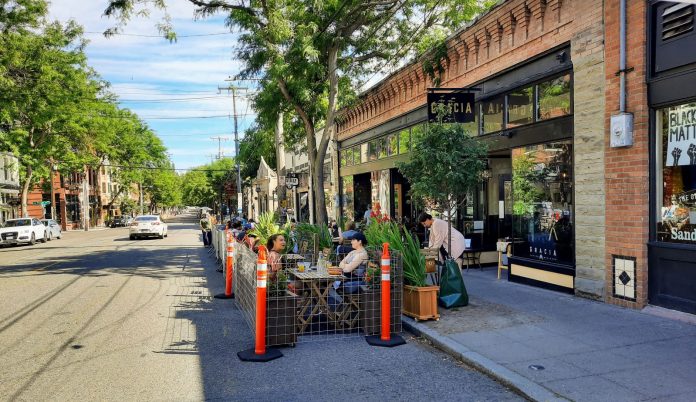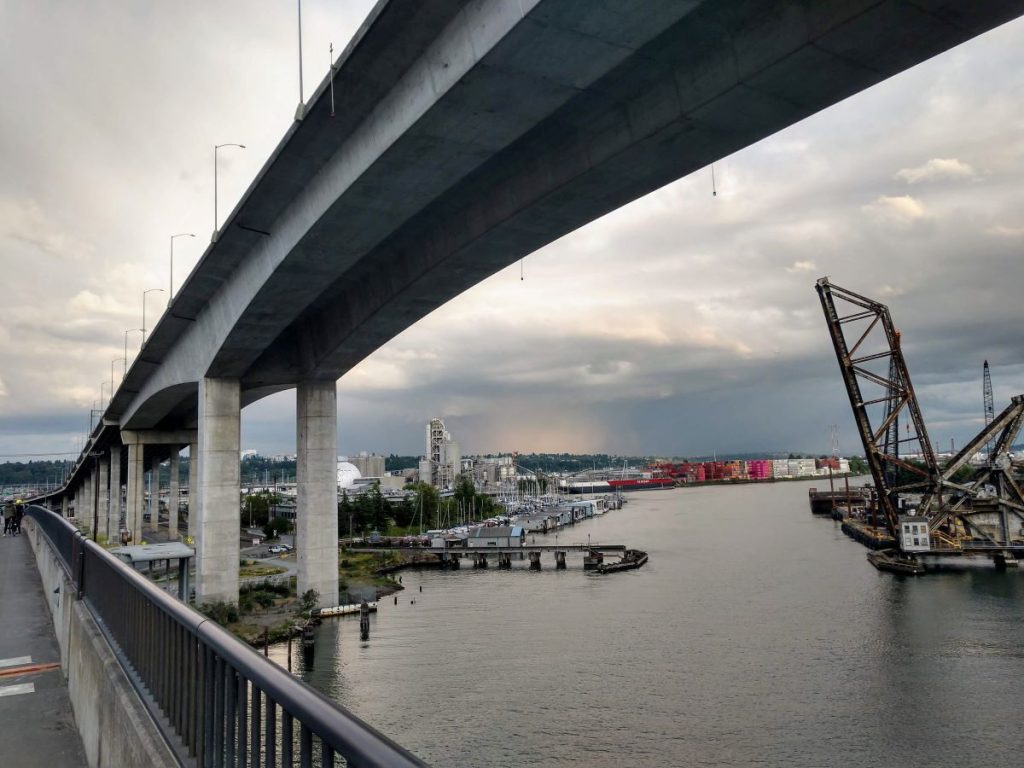
Seattle will permit restaurants and retail shops to open into traffic-less public streets one block at a time. Two months after the idea was publicized in local media, Mayor Jenny Durkan announced that street closure permits will be available for businesses to expand into some roadways, allowing better social distancing while keeping businesses open.
During the two months of summer since Councilmember Dan Strauss broached the open restaurant streets idea (weeks after The Urbanist did), Seattle experienced 40 days over 70 degrees and 41 days with little or no rain. Neighboring towns like Bothell and Port Townsend have set up and expanded their retail open streets to aid their business communities during the lovely Washington summer. Dozens of Seattle restaurants have permanently closed.
While awaiting the ability to use our public streets for eating and shopping safely, King County transitioned through the Modified Phase 1 reopening plan on June 5th to a full Phase 2 on June 19th. Both allowed restaurants to open for some dining. Over those same two months, King County increased from 8,000 Covid cases and 554 deaths to 13,661 cases with 659 deaths as of July 22th. Such deterioration in fighting the pandemic led to new guidance limiting the number of people allowed in groups, delays in future reopening plans, and Governor Jay Inslee’s admonishment that further rollbacks may be necessary.

Restricting streets to traffic has been possible in Seattle for more than two months, just nowhere it would help businesses. Permanent Stay Healthy Streets were announced on May 17th and more have been added since. They just run outside of business districts and core areas. Parking was shut down near parks since the early days of the pandemic. Unlike anything happening in commercial areas, parking at select parks has been adjusted.
Admittedly, the Mayor’s Office has been busy for the last two months. Seattle police started violently antagonizing protesters on May 29th, that same day that the dining streets discussion first appeared in the paper. The Mayor’s troops spent two weeks gassing and harassing activists who opened a street by public consensus. And the administration engaged in an extensive disinformation campaign against protesters. These things are time consuming and may delay reasonable accommodations for local business even outside the protest areas.
The program to open new streets also took a back seat to the Mayor’s beef against Councilmember Kshama Sawant. Administration resources needed to be used crafting a 900 word missive about the Councilmember’s actions before that was summarily brushed aside. Understandably, the Mayor was upset by activists claiming the street in her private, gated community for pedestrian uses.
And there has been the last few weeks of bad faith misrepresentations of the demands to defund the Seattle Police Department. From incorrectly characterizing that activists have “no plan” to obfuscating cuts to the police budget to now complaining that Federal Secret Police may use the exact same tactics her police department has engaged for 50-odd days, there are many dimensions to the Mayor’s busyness which could have delayed things too.
That’s even before we get to crumbling infrastructure and self-sabotaging transportation cuts.

But after all that, Seattle businesses are allowed to move operations into public right-of-ways. Or they will be able to after submitting a new, temporary permit to close their street. Permits will require applicants to notify and demonstrate support from neighboring businesses and neighbors. Equipment to close the street will be the responsibility of the applicant. And Seattle Department of Transportation (SDOT) won’t start accepting the applications until next week.
Though two months from the initial idea, no information is available from the Mayor’s bold print press release on how long permits will take. Applicants are encouraged to engage in “coaching” with SDOT in order to manage their applications with little information on what that entails. We are encouraged to “stay tuned for more information regarding eligibility.”
We also don’t know if SDOT will seek to convert entire commercial districts into open street corridors to provide a level playing field for businesses or if it’s more likely to be a loose patchwork of block by block closures if some businesses are less “coachable” or less interested in jumping through the required hoops.
But again, the Mayor’s Office has been busy accusing others of having no plan. Hopefully, no one will be too exhausted to enjoy the open dining streets should they ever actually open.
Ray Dubicki is a stay-at-home dad and parent-on-call for taking care of general school and neighborhood tasks around Ballard. This lets him see how urbanism works (or doesn’t) during the hours most people are locked in their office. He is an attorney and urbanist by training, with soup-to-nuts planning experience from code enforcement to university development to writing zoning ordinances. He enjoys using PowerPoint, but only because it’s no longer a weekly obligation.

